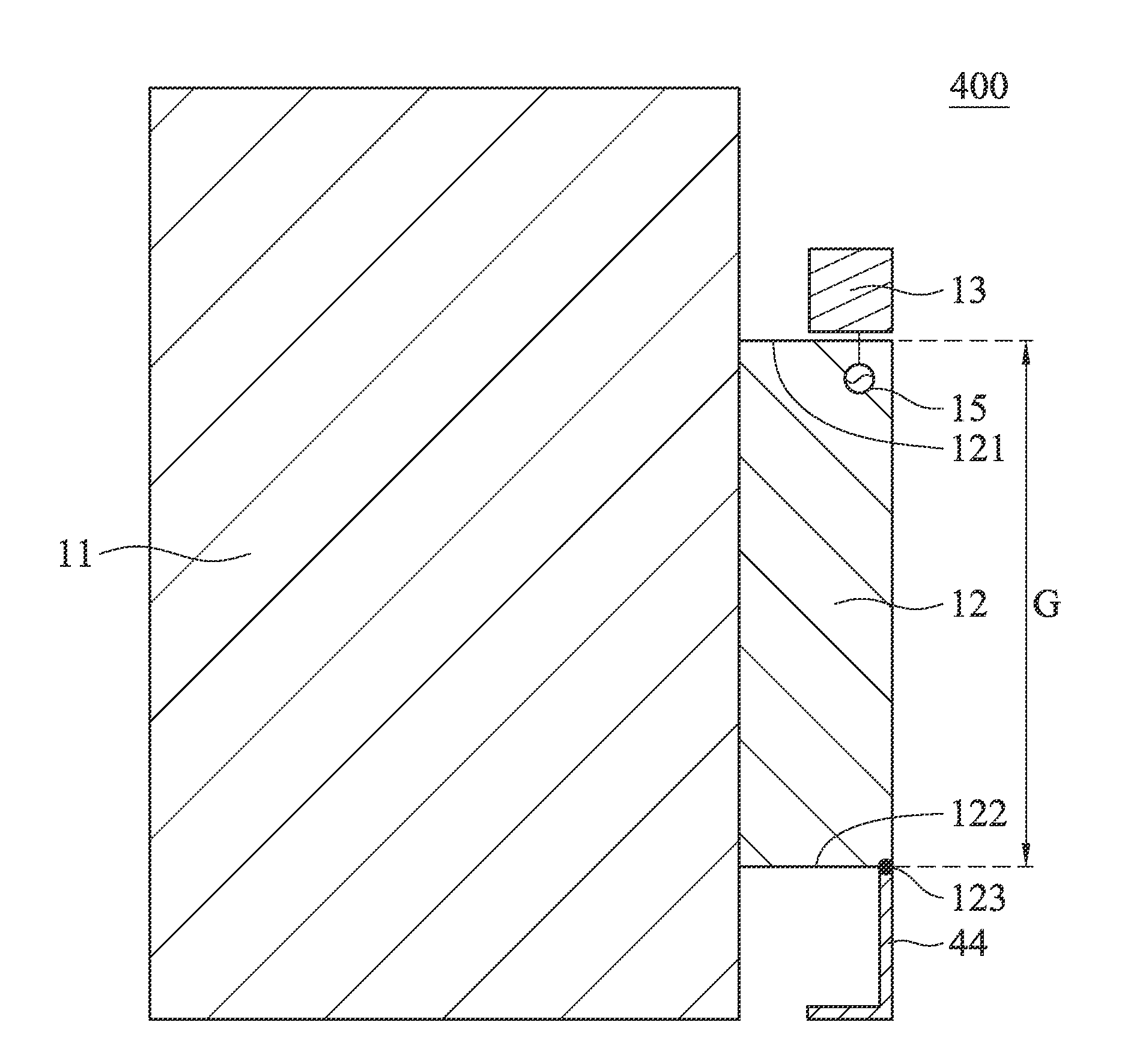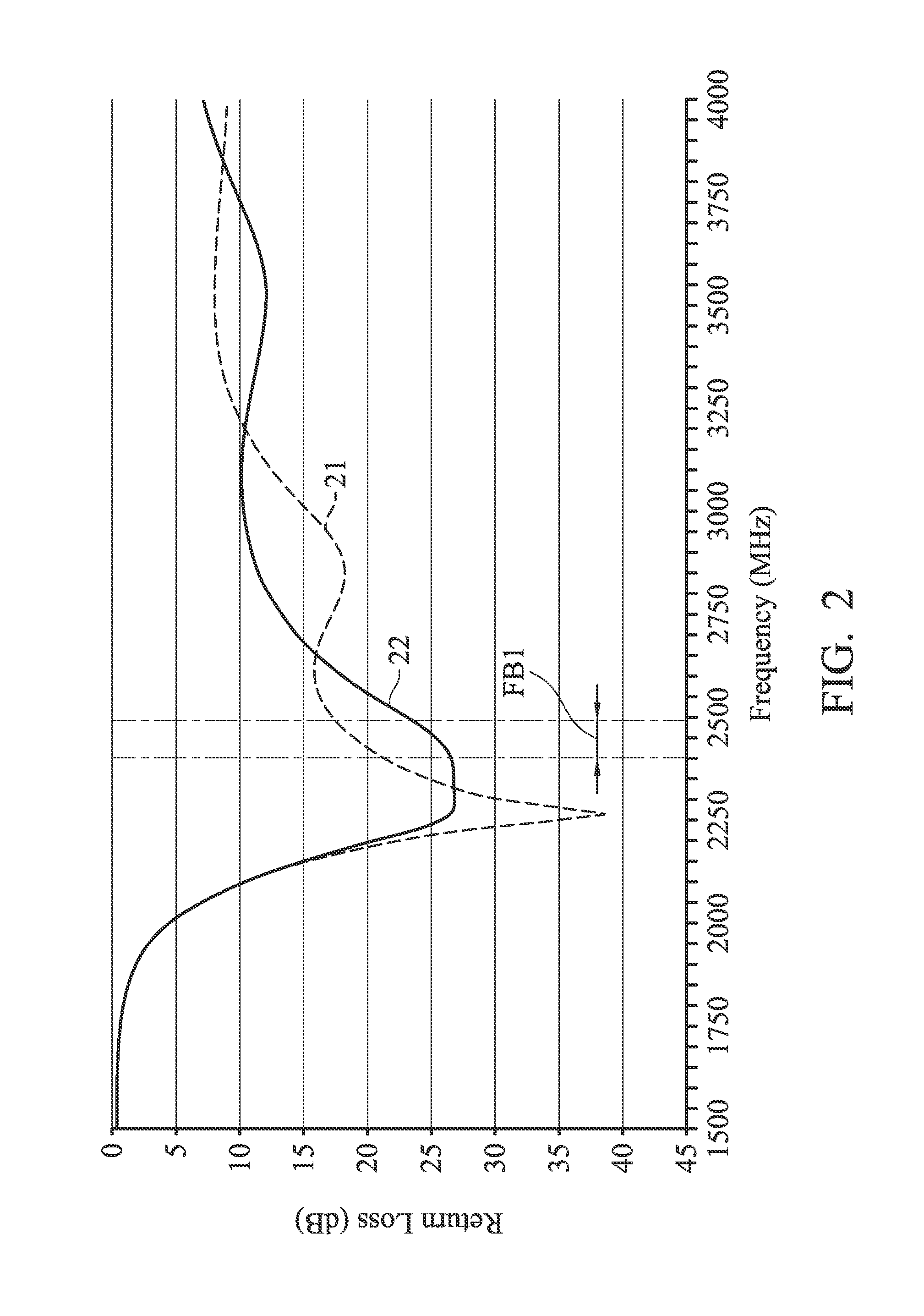Communication device
a communication device and isotropic radiation technology, applied in the direction of antenna earthings, etc., can solve problems affecting the whole communication quality of the device, and achieve the effects of improving the impedance matching of the antenna element, enhancing the symmetry of the antenna element arrangement, and increasing the effective resonant length of the ground elemen
- Summary
- Abstract
- Description
- Claims
- Application Information
AI Technical Summary
Benefits of technology
Problems solved by technology
Method used
Image
Examples
first embodiment
[0020]FIG. 1 is a diagram of a communication device 100 according to the invention. The communication device 100 may be a wireless access point. As shown in FIG. 1, the communication device 100 at least includes a system ground plane 11, a ground element 12, an antenna element 13, and a metal guide line 14. The system ground plane 11, the ground element 12, and the antenna element 13 may be made of conductive materials, such as copper, silver, aluminum, iron, or their alloys. The ground element 12 may be coupled to the system ground plane 11, or may be formed by an extension portion of the system ground plane 11. A combination of the ground element 12 and the system ground plane 11 may substantially have an inverted T-shape. The ground element 12 has a first edge 121, a second edge 122, and a connection point 123. The first edge 121 and the second edge 122 are opposite to each other. The antenna element 13 is disposed adjacent to, or at, the first edge 121 of the ground element 12. ...
fourth embodiment
[0025]FIG. 6 is a diagram of the antenna element 13 according to the invention. The antenna element 13 is a planar antenna. Specifically, the antenna element 13 is a coupled-fed loop antenna. The antenna element 13 includes a feeding radiation element 131 and a grounding radiation element 132. The feeding radiation element 131 is completely separate from the grounding radiation element 132, and a coupling gap is formed therebetween, such that feeding energy is delivered from the feeding radiation element 131 to the grounding radiation element 132. For example, the width of the coupling gap is shorter than 2 mm. The feeding radiation element 131 substantially has an inverted L-shape. One end of the feeding radiation element 131 is coupled to the signal source 15, and another end of the feeding radiation element 131 is open. The grounding radiation element 132 substantially has an inverted Y-shape. One end of the grounding radiation element 132 is coupled to a ground voltage VSS. The ...
PUM
 Login to View More
Login to View More Abstract
Description
Claims
Application Information
 Login to View More
Login to View More - R&D
- Intellectual Property
- Life Sciences
- Materials
- Tech Scout
- Unparalleled Data Quality
- Higher Quality Content
- 60% Fewer Hallucinations
Browse by: Latest US Patents, China's latest patents, Technical Efficacy Thesaurus, Application Domain, Technology Topic, Popular Technical Reports.
© 2025 PatSnap. All rights reserved.Legal|Privacy policy|Modern Slavery Act Transparency Statement|Sitemap|About US| Contact US: help@patsnap.com



